How To Create An Account With Ring
GALLERY
How to protect your Ring account with the new Control Center privacy dashboard
Ring has updated its app with new and improved privacy tools. Here's how to make the most of them.
By , Executive Editor, TechHive |

Michael Brown / IDG
Step 1: Launch Control Center
The first step is to launch the Ring app and navigate to the Control Center. From the opening screen, tap the hamburger icon on the upper left-hand corner and tap on Control Center (it's listed between Account and New Features and it will have a red dot next to it if you haven't accessed it before). We've marked it with a big arrow in this screenshot.
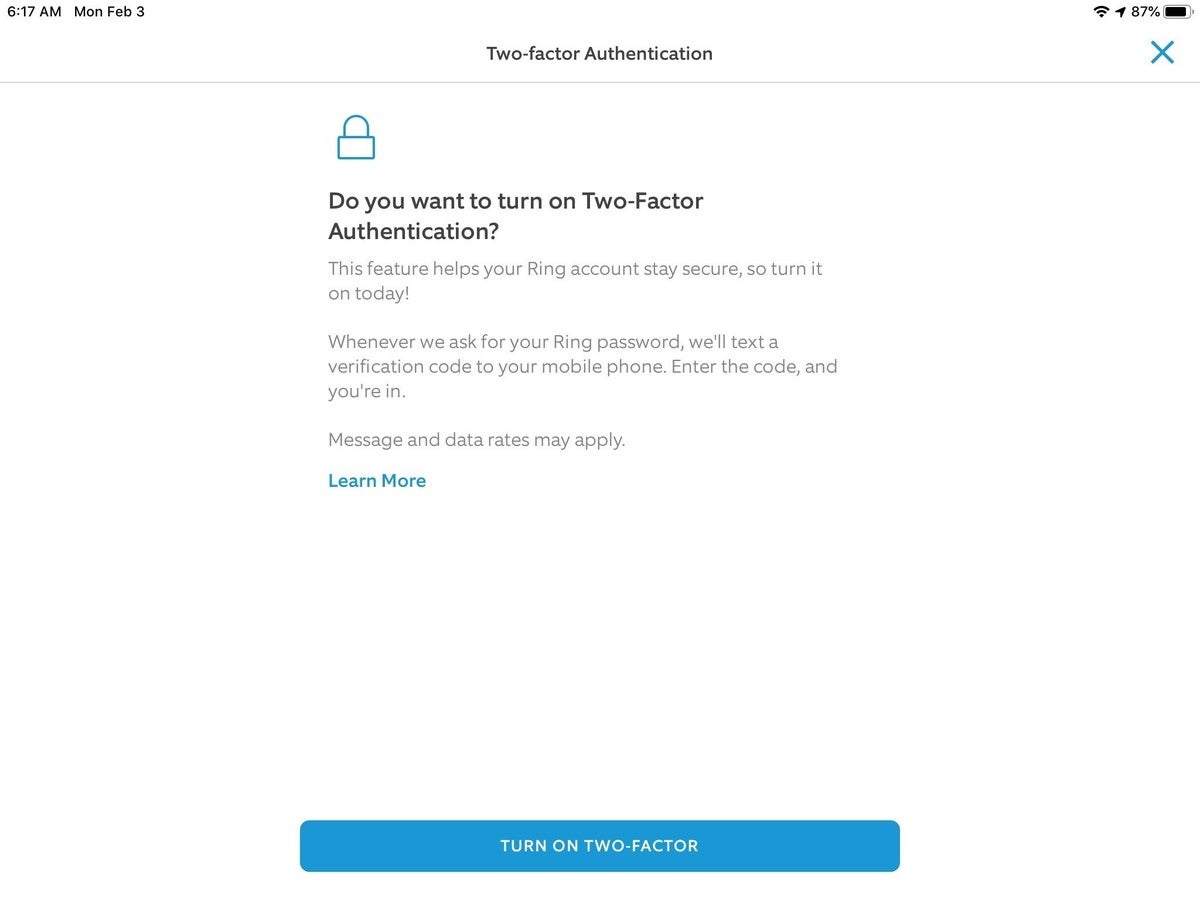
Michael Brown / IDG
Step 2: Enable two-factor authentication
To enable two-factor authentication, tap the first item in the Control Center menu, labeled Two-Factor Authentication; click the button at the bottom of the screen, labeled Turn On Two-Factor; confirm your Ring account password in the field provided and tap the Continue button. Next, provide the smartphone number that you want Ring to send a verification code to and tap the Continue button.
Ring will text a six-digit code to your phone. Enter this in the field provided, tap Continue, and tap it again on the next screen. That's all there is to it, you've enabled two-factor authentication. Now, each time you log into the Ring app from a new device, you'll need both your password and a one-time six-digit code that Ring will send to your phone via text message. This should ensure that even if account has been compromised, no one will be able to access your account unless they have your account credentials and are also in possession of your phone and can unlock it.
That said, the type of two-factor authentication Ring is using is not impervious to hackers, primarily because SMS is not a secure means of communication. Unencrypted text messages can be intercepted, and hackers can steal your phone number and reassign it to a different SIM card.

Michael Brown / IDG
Step 3: Verify the devices authorized to access your account
Once you're back at the Control Center screen, click on Authorized Client Devices to see which devices can access your Ring account. The list will show the type of device , the operating system it's running, whether it's currently logged into your account or not, and the date it was authorized. The mobile device you're using to access the app will be identified with "This Device." This list would be even more useful if it showed you the primary user's name—or better yet, a MAC address—but what I've listed is all you'll have to go on.
If you or another authorized user no longer has control over any device on this list, you should revoke its authorization as soon as possible. Unfortunately, Ring provides no means of doing this on a per-device basis—you need to removealldevice authorizations at once. Obviously, you'll need to go back and re-enroll the devices youdowant to
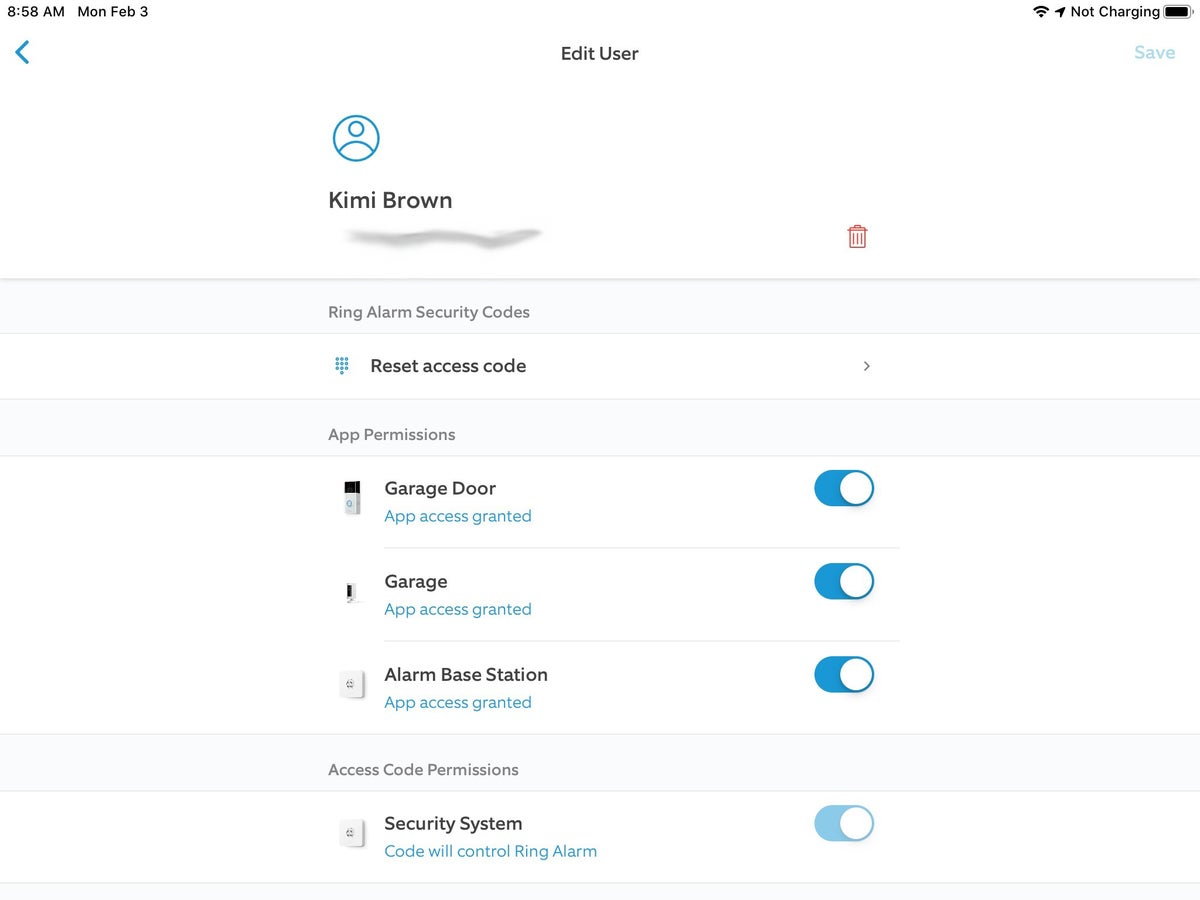
Michael Brown / IDG
Step 4: Verify shared users
Your Ring account can have a single owner who has complete administrative control over the system, but you can add "shared" users and grant them permission to access your Ring security system and/or your Ring cameras on a per-device basis. If you've installed Ring devices in more than one location, you can have different shared users at each location.
If you have a Ring Alarm system, you can also create Guest users who will be able to disarm the alarm system (with the option of limiting such access to a defined schedule). Guest users don't have access to Ring video devices. You should review this list from time to time—especially if you've created guest accounts—and decide whether those shared and guest users should continue to have the access you've granted them. Remove anyone who should no longer have access to your Ring Alarm and/or Ring cameras.
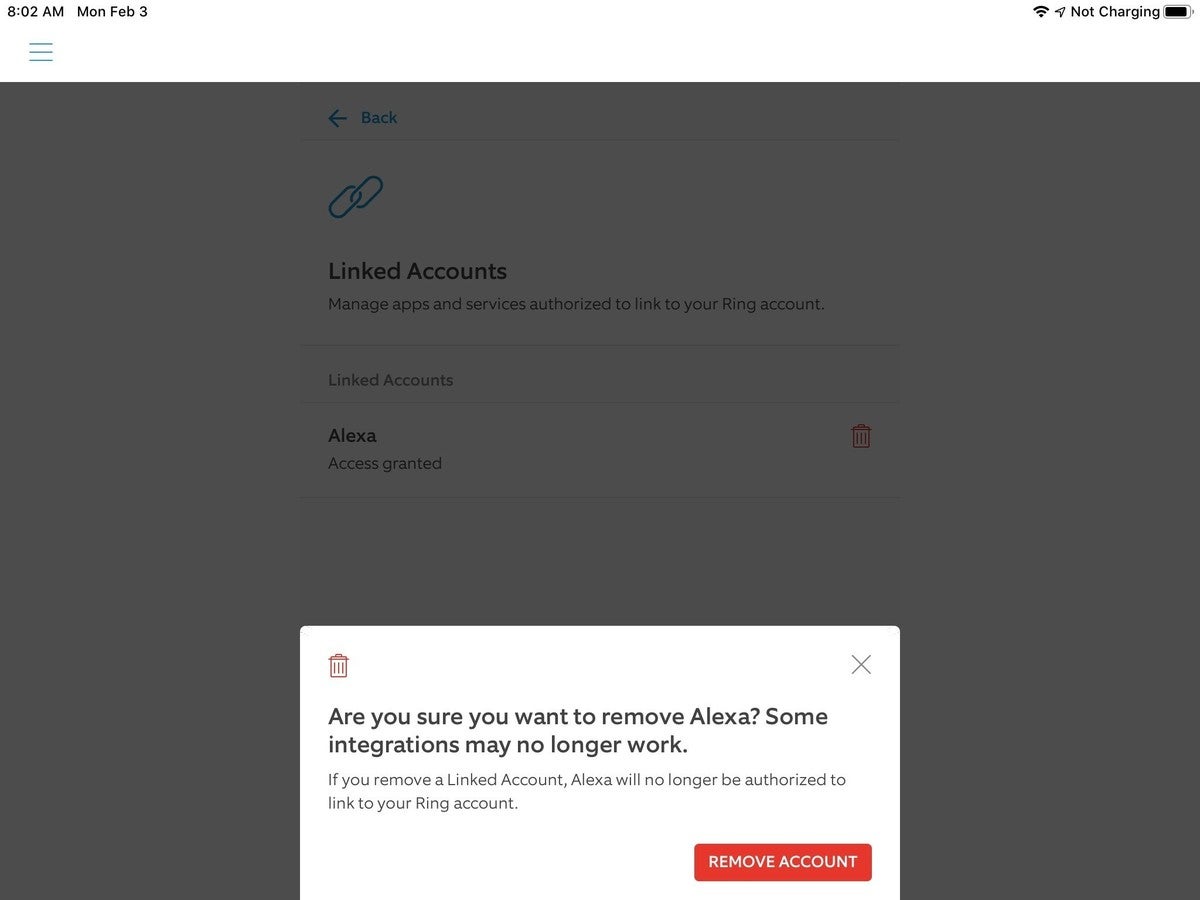
Michael Brown / IDG
Step 5: Review your linked accounts
If you've had Ring devices for a long time, chances are good that you've linked other apps and services to your Ring account. If you have something in the Amazon Echo Show lineup or a display-equipped Nest Home, for example, you probably linked those accounts so you can stream a feed from your Ring video doorbell or security camera to that display. The same goes for a smart home hub like Samsung SmartThings or an automation service such as IFTTT.
If you later switched platforms or otherwise stopped using that device, app, or service, it's possible that you forgot to unlink those accounts. Take a moment to review this page now and revoke any appropriate permissions by clicking on the garbage-can icon.
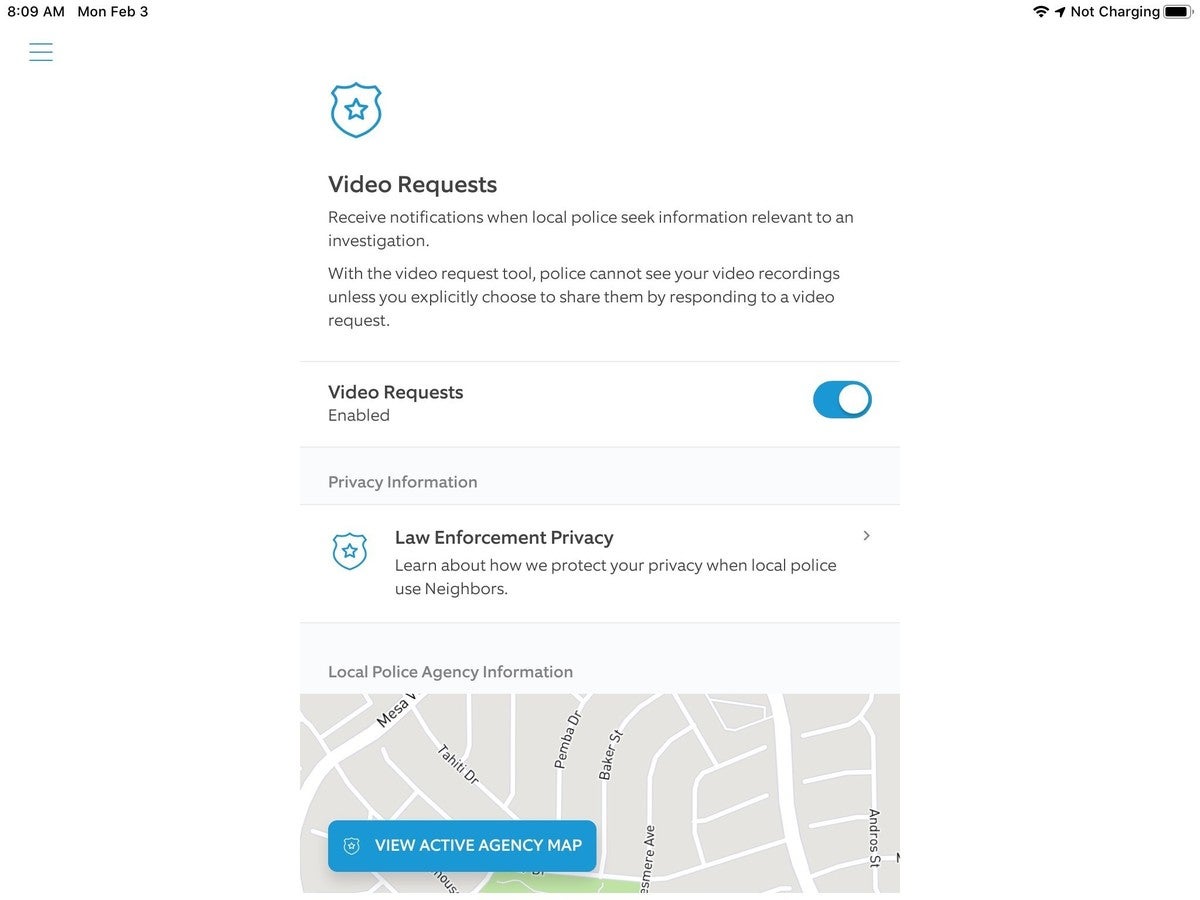
Michael Brown / IDG
Step 6: Do you want to provide video to local police?
Ring has been roundly criticized by the Electronic Frontier Foundation (EFF), civil rights groups, and others for its relationships with local police departments via its Ring Neighborhoods initiative. The company has provided law enforcement with maps as to where Ring cameras are located, which has allowed police departments to contact Ring customers to request video recordings from their cameras to aid in their investigation of crimes.
Previously, you had to grant or deny each request on a case by case basis. Now, you can opt out of receiving such requests in the first place (it's worth noting that Ring says police cannot access your camera's live feed at any time). To express your preference, scroll down and tap on the Video Requests bar. If you would like to receive such requests, slide the Video Requests button to the right to enable the feature. If you'd like to opt out of the program, slide the button to the left. Scroll down a bit further and you can click on a Google map that displays all the law enforcement agencies participating in Ring's Neighbors Law Enforcement program, though you'll need to zoom in to find your own neighborhood.
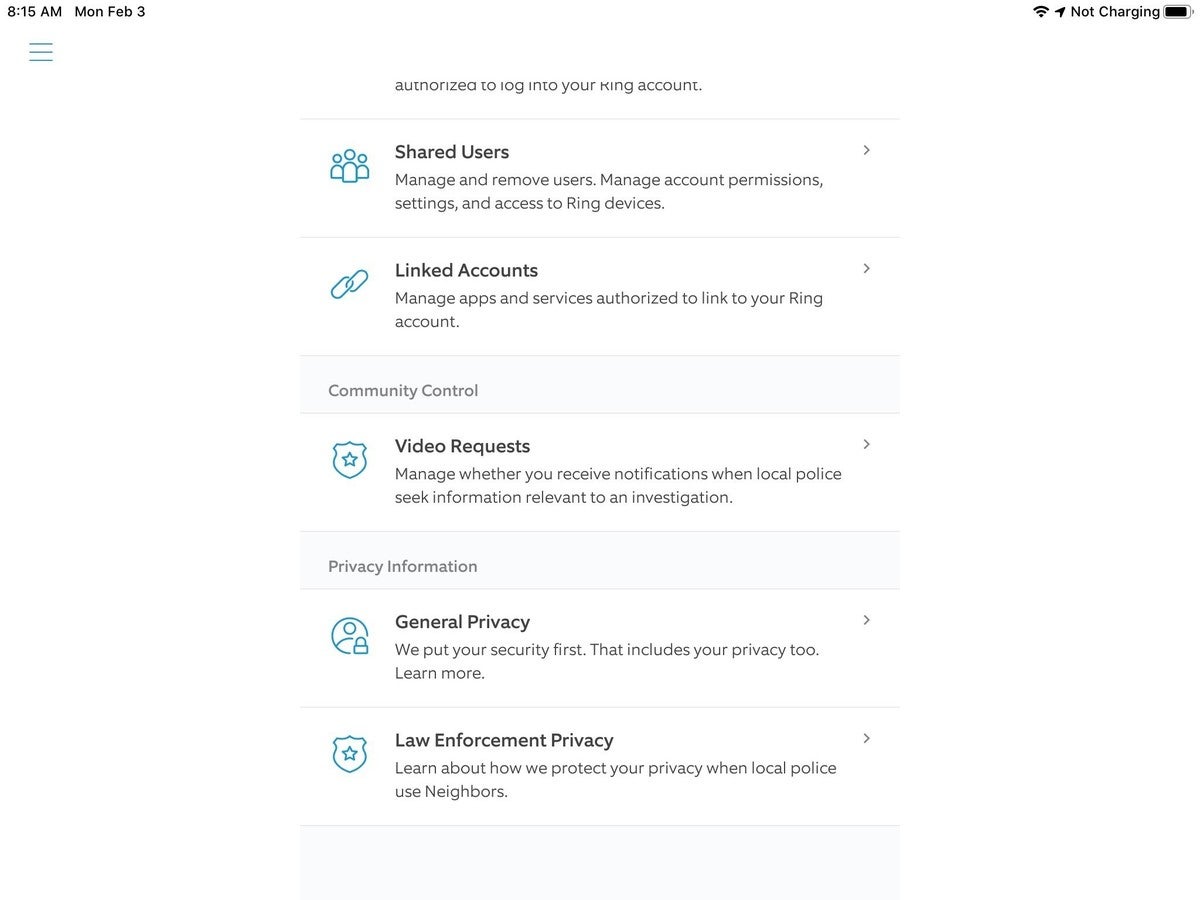
Michael Brown / IDG
Step 7: Review Ring's privacy policies
If you're like most of us, you probably agreed to Ring's privacy policies without reading them when you installed the Ring app. The last two items on the Ring app's Control Center give you an opportunity to look over this information again. There are two policies: One covers Ring's general privacy policy and the other covers Ring's privacy policy as it relates to local law enforcement.
You should read both policies and refresh your memory of them from time to time. You should be particularly familiar with how Ring's law enforcement privacy policy relates to video you post to Ring's Neighbors app. Law enforcement will have access to those videos even if you opt out of the video request program. In addition, if you opt in to video requests and share a video with police, the officer requesting the video will have access to the street address and email address associated with your Ring account. If you share a video in the neighbors app, the video becomes a public record and police will have access to along with any information (street address, etc.) that you include with the shared video.
Updated February 4, 2020to clarify our description of Ring's privacy policy.
How To Create An Account With Ring
Source: https://www.techhive.com/article/3518899/how-to-protect-your-ring-account-with-the-new-control-center-privacy-dashboard.html
Posted by: welchnotheeptist.blogspot.com

0 Response to "How To Create An Account With Ring"
Post a Comment